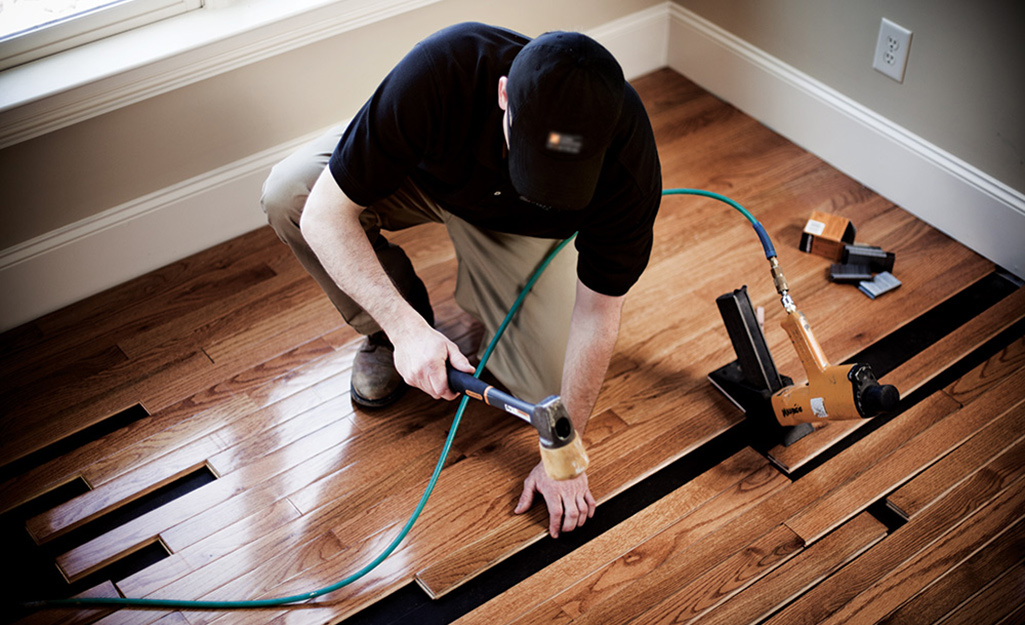Flooring is much more than just a part of your home’s structure—it’s a statement of style and function. The correct installation of your chosen flooring, whether it’s lavish hardwood, elegant tiles, or modern laminates, is imperative to ensure it looks impeccable and lasts long. Today, we’re going to explore the three most popular flooring installation methods: nail-down, glue-down, and floating. By the end, you’ll see why trusting a professional for the job might be the best way forward.
Nail-Down Flooring Installation: Traditional and Timeless
Starting off with one of the classics, the nail-down method.
What is Nail-Down Installation?
Simply put, this method involves securing your flooring directly to the subfloor using specialized nails or staples. It’s a go-to method for solid hardwood floors.
Advantages:
- Stability: It offers unparalleled stability, ensuring your floor remains firmly in place.
- Durability: Nailed-down floors tend to last longer, making them perfect for areas with heavy foot traffic.
Drawbacks:
- Limitations: It’s not suitable for all types of subfloors, especially concrete.
- No Room for Error: Incorrect installation can lead to creaky floors or damage.
Glue-Down Flooring Installation: The Firm Choice
Transitioning to a method that’s gaining traction for its versatility: glue-down installation.
Understanding Glue-Down Installation
Here, the flooring is adhered to the subfloor using strong adhesives. It’s often chosen for tiles and some types of hardwood.
Advantages:
- Versatility: Works exceptionally well on concrete subfloors where nailing isn’t an option.
- Sound: Reduces the echoey or hollow sound which some floors might produce.
Drawbacks:
- Permanent: Once glued, removing or replacing the flooring can be challenging.
- Preparation: The subfloor needs to be impeccably clean and level for best results.
Floating Flooring Installation: Modern and Swift
Lastly, the floating method, the darling of DIY enthusiasts and professionals alike.
The Essence of Floating Installation
In this method, the floorboards are attached to each other, either through a click-lock system or by gluing their edges, without being attached to the subfloor.
Advantages:
- Flexibility: Can be installed over various subfloors, including existing ones.
- Convenience: Faster and requires fewer tools, making it a favorite for quick renovations.
Drawbacks:
- Feel: Might not feel as solid underfoot when compared to the other methods.
- Sound: Can produce a hollow sound, though this can be mitigated with quality underlayment.
Professional Flooring Installation: Why It’s Worth It
Having detailed the three primary flooring installation methods, there’s a common thread to consider: the importance of professional installation. Whether it’s ensuring the nails are driven correctly, the adhesive spread uniformly, or the boards clicked in seamlessly, the expertise professionals bring can make a world of difference. They not only ensure the longevity of your flooring but also guarantee a flawless finish, making your investment truly shine.
Conclusion
Your home’s flooring is a significant investment that combines functionality with aesthetics. Whether you choose nail-down, glue-down, or floating methods, ensuring it’s laid perfectly is crucial. This is where professional flooring installation steps in, turning your dream floors into reality with precision and expertise.

